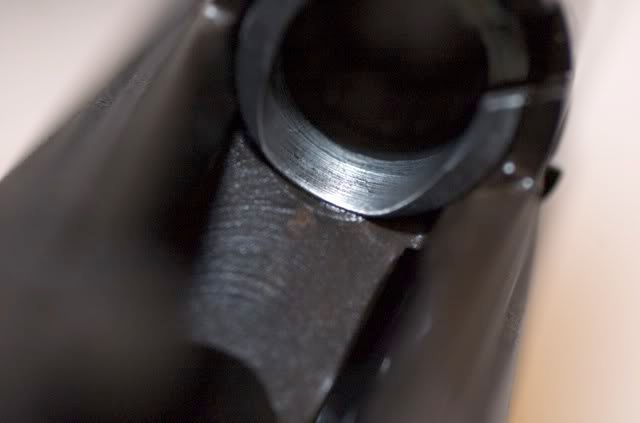Parts get seated from recoil in a way that only shooting can do.
Seated? What does that mean? Which parts get seated?
Springs get "worked in", in general, the whole thing gets used to working together.
"Worked in"? Could you explain what that means? How does the spring change? Does it get weaker, stronger, smaller, longer?
Most new pistols are fired at the factory to test them. They are put in a vise and the number of rounds fired is what you see on your target. The most I've ever seen is six. The term Break in implies there is a manner in which the pistol must be handled early on to get optimum performance or long life. When terms such as "seated" and "worked in" are used I can't relate them to a firearm. Maybe on a chain saw, where you have to find the right bar tension and the cutting chain actually does change...but not on a gun.
Auto pistols are a complex balance of many forces, all of which need to be within fairly narrow ranges in order for things to work right.
If the range of operation is that narrow...and if the pistol fires at the factory...and if there is zero wear on all parts... isn't that the best a particular gun will ever be? If the range of operation is so narrow, wouldn't seating and working in change that narrow range for the worse?
People often mention triggers "smoothing out". I have to confess I don't really buy that either, although I'm more open to that because there are a few parts that actually wear against each other. Polishing each other though is a bit of a stretch IMO. I frankly can't remember what the trigger felt like 10 years ago. The longest I've owned one pistol is 41 years, and the trigger feels the same to me now as it did 41 years ago. Who could really tell? That would be a much to subtle change.
The main parts that really have frictional contact are the rails and slide and that is the main point of lubrication attention. Even there I've never seen where any change occurs after shooting a few hundred rounds. The whole break in concept makes no sense to me. If the gun worked on round #2, it should work on round #200, or #2000 for that matter...and going down hill all time...not getting better.
What does improve is the operator, while experimenting with ammo, grip style, grip force, lubes, trigger finger style, etc, etc. These are the variables that I see as effecting a new pistol. The pistol itself either works, by virtue of good design and competent execution of the build, or it doesn't. Becoming familiar with a new pistol is one thing...the pistol actually changing in some noticable manner in a few hundred rounds is more than I can accept.
As an example; look to the HK line Vs. Keltec. HKs work right out of the box, a design executed very well. The Keltec... a good design, executed poorly. Take the time to examine a HK P7 ramp and tell me if perhaps it need polishing. Yet, the pistol works. How could that be? If any gun ever needed a fluff and buff it is the P7. I rest my case Your Honor.
Exhibit A;

Last edited:
